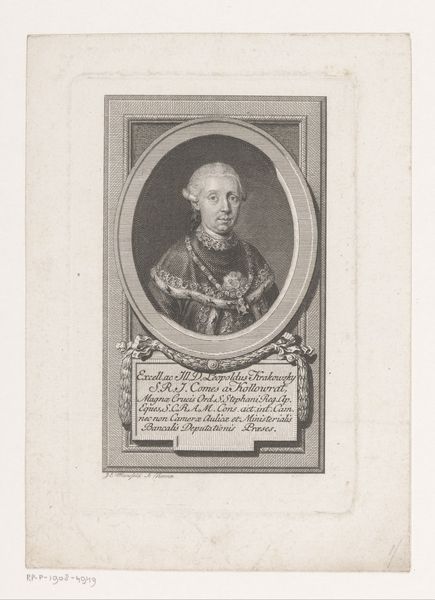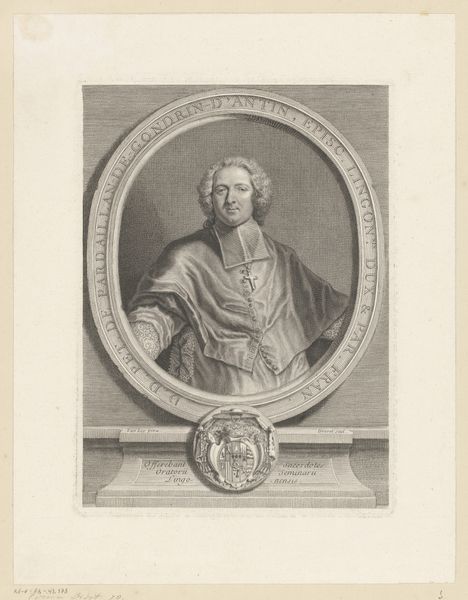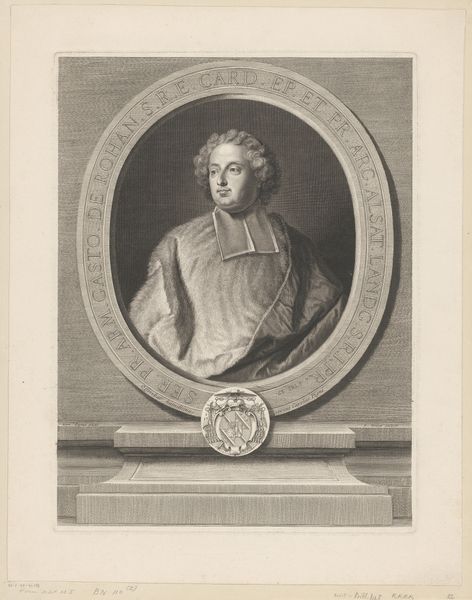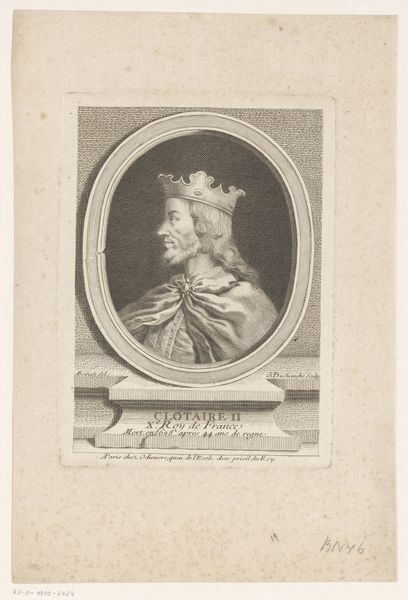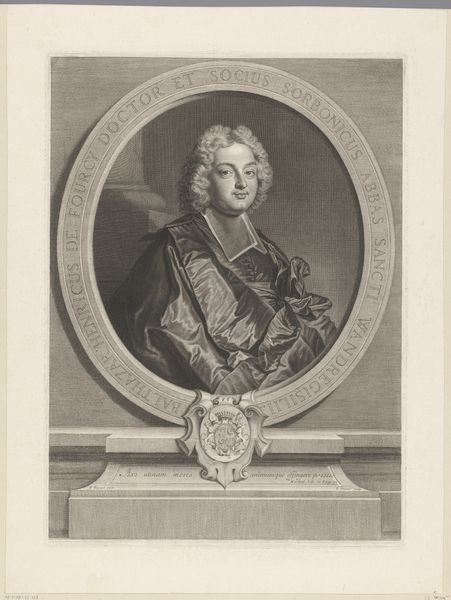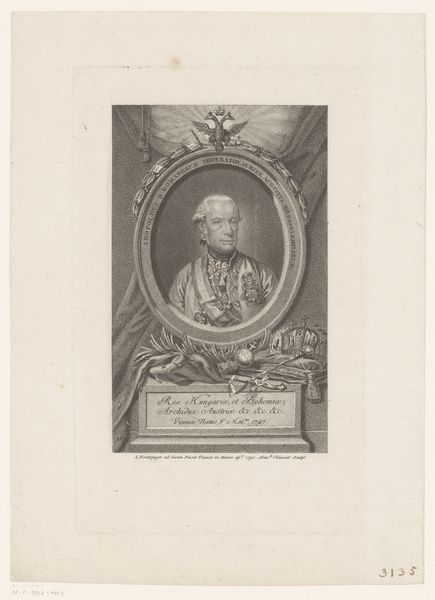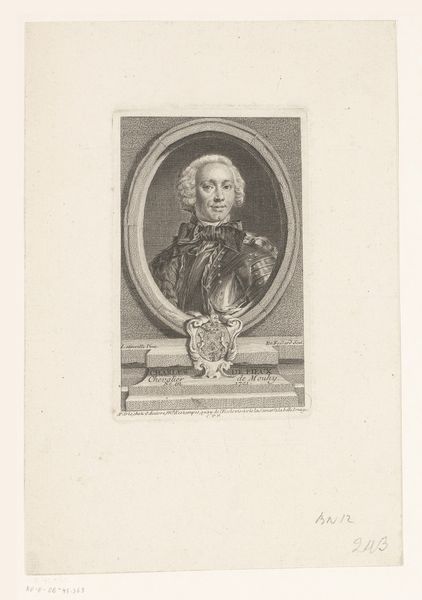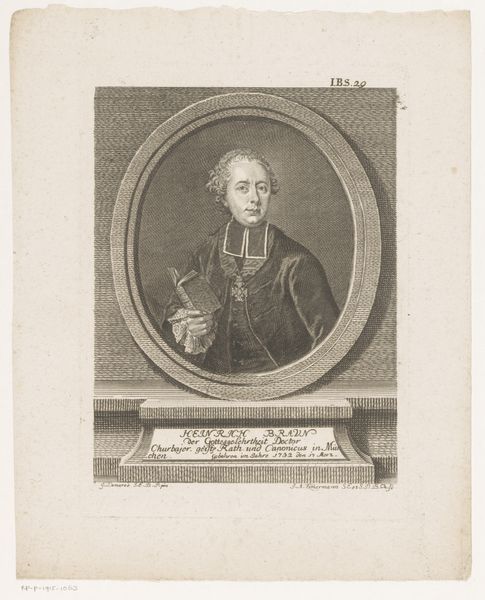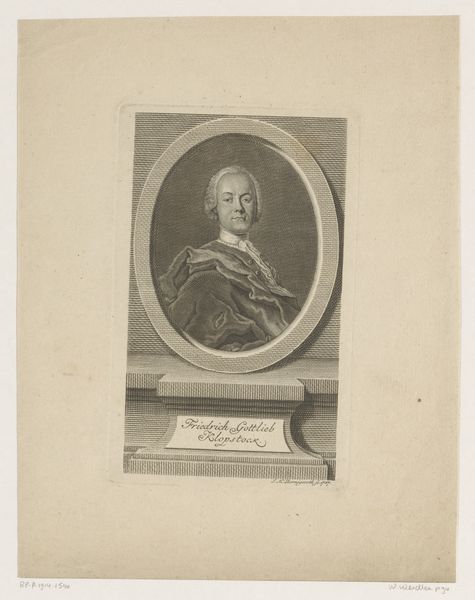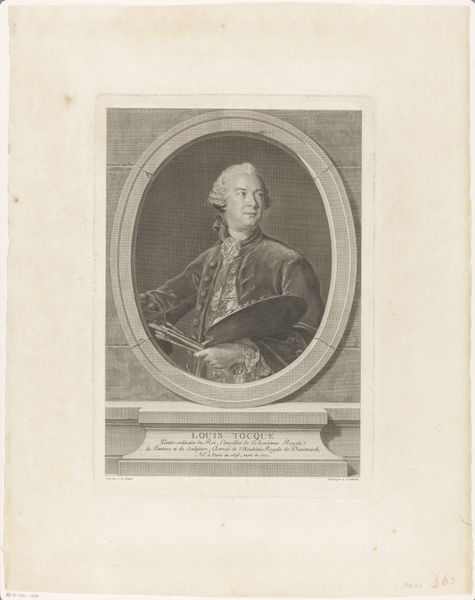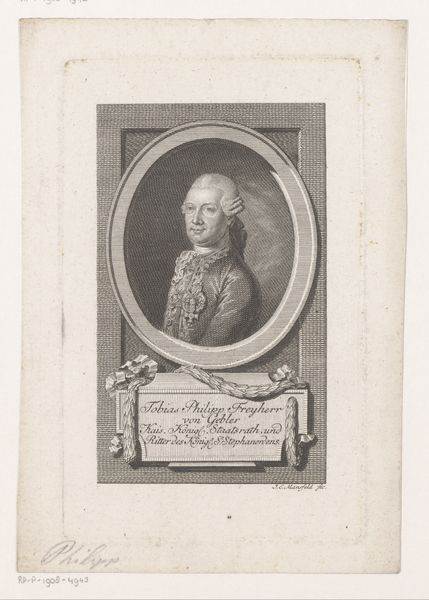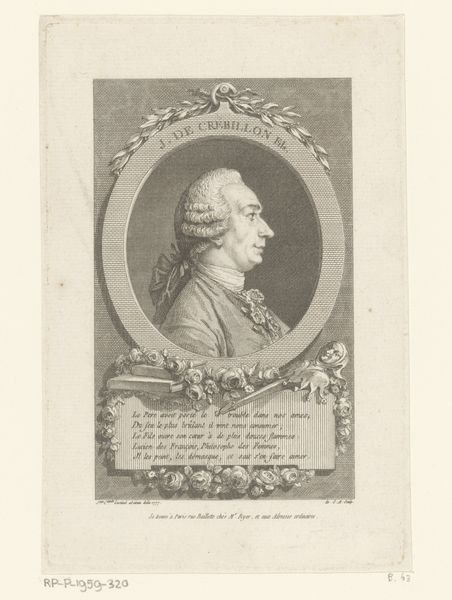
print, paper, engraving
#
portrait
#
aged paper
#
baroque
# print
#
light coloured
#
old engraving style
#
paper
#
historical photography
#
15_18th-century
#
line
#
history-painting
#
engraving
Dimensions: height 140 mm, width 102 mm
Copyright: Rijks Museum: Open Domain
Editor: This is "Portret van Jean-Joseph Languet de Gergy," a 1736 engraving on paper by Nicolas Gabriel Dupuis. The detail is incredible! What strikes me is how it presents a figure of power so subtly. What do you see in this portrait? Curator: I see more than just a portrait; I see a statement about power and representation within the social hierarchies of 18th-century France. The sitter's clerical garb speaks volumes about the intertwined relationship between church and state. Who had access to representation and who was denied it? What role did the church play in enforcing these disparities? Editor: That’s fascinating. I was so focused on the individual, I missed the broader context. So you see this less as an individual portrait, and more as a symbol of institutional power? Curator: Exactly! Consider also the engraving medium itself – printmaking allowed for wider dissemination, potentially solidifying the Church's influence through readily available imagery. But think critically: who was *consuming* these images? What narratives were they reinforcing? Were they complicit or subversive? Editor: So it's not just *what* is depicted, but *how* and *for whom* it was made? I hadn't considered the print's accessibility in shaping public perception of the church. Curator: Precisely. Even seemingly neutral portraiture is laden with social and political weight. How does examining historical power structures inform our view of contemporary society, with its own power dynamics and methods of representation? Editor: This has totally changed how I'll look at portraits from now on. I will now be thinking a lot about the power structures and how they contribute to who gets seen, and how. Curator: Excellent! Engaging with art history involves questioning the dominant narratives, exploring hidden perspectives, and continuously re-evaluating our understanding of the past and its reverberations in the present.
Comments
No comments
Be the first to comment and join the conversation on the ultimate creative platform.
